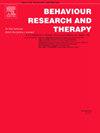解释心理治疗记录中的焦虑预测:患者语言特征和理论结构的作用。
IF 4.5
2区 心理学
Q1 PSYCHOLOGY, CLINICAL
引用次数: 0
摘要
目的:语言学是研究心理过程和症状的有效工具。本研究旨在通过心理治疗记录中的患者语言来预测焦虑的严重程度。与之前专注于孤立特征类型的工作相反,我们将理论驱动的心理结构与最先进的NLP和机器学习技术相结合,以提高性能和可解释性。具体来说,我们问了(1)焦虑的预测效果如何,(2)哪些模型表现最好,(3)哪些特征最重要。方法:从118例患者的529份心理治疗记录中提取LIWC特征、单字和双字、变形情绪和主题。此外,我们构建了理论驱动特征来衡量消极的自我关注、自我洞察、感知威胁的未来焦点和不确定性回避。每个特征集使用多种机器学习算法建模。为了深入了解最具信息量的焦虑预测因素,应用了可解释人工智能(eXplainable Artificial Intelligence)。结果:Unigram-Bigram模型预测效果最佳(r = 0.77; 95% -CI = 0.75 -0.80)。然而,焦虑过程模型取得了显著的预测准确性,尽管只有四个可解释的,基于理论的特征。与休闲、社会关系和不安全感相关的特征与较低的焦虑严重程度相关,与健康相关的特征和“确定性词”(例如,完全)与较高的严重程度相关。结论:我们的研究结果强调了性能和可解释性之间的权衡。单图模型最大限度地提高了预测准确性,而理论驱动的结构提供了对核心心理过程有临床意义的见解。识别预测性语言特征,特别是那些与心理学理论相关的特征,可以通过提供可解释和理论一致的见解来指导反馈系统和临床应用的未来研究。本文章由计算机程序翻译,如有差异,请以英文原文为准。
Explaining anxiety prediction in psychotherapy transcripts: The role of patient linguistic features and theoretical constructs
Objective
Linguistics can be a helpful tool when researching psychological processes and symptoms. This study aimed to predict anxiety severity from patient language in psychotherapy transcripts. In contrast to prior work focusing on isolated feature types, we combine theory-driven psychological constructs with state-of-the-art NLP and machine learning techniques to enhance both performance and interpretability. Specifically, we asked (1) how well anxiety can be predicted, (2) which models perform best, (3) which features are most important.
Method
We extracted LIWC features, unigrams and bigrams, Transformer emotions, and topics from 529 psychotherapy transcripts from 118 patients. In addition, we constructed theory-driven features to measure negative self-focused attention, self-insight, future focus of perceived threat, and uncertainty avoidance. Each feature set was modeled using multiple machine learning algorithms. To gain insights into the most informative predictors of anxiety, eXplainable Artificial Intelligence was applied.
Results
The Unigram-Bigram Model achieved the best predictive performance (r = .77; 95 %-CI = .75–0.80). However, the Anxiety Process Model achieved notable predictive accuracy despite having only four interpretable, theory-based features. Features related to leisure, social relationships, and insecurity were associated with lower anxiety severity, health-related features and “certainty words” (e.g., totally) with higher severity.
Conclusions
Our findings highlight a trade-off between performance and interpretability. Unigram-bigram models maximized predictive accuracy, whereas theory-driven constructs provided clinically meaningful insights into core psychological processes. Identifying predictive linguistic features, especially those linked to psychological theory, may guide future research on feedback systems and clinical applications by providing interpretable and theory-aligned insights.
求助全文
通过发布文献求助,成功后即可免费获取论文全文。
去求助
来源期刊

Behaviour Research and Therapy
PSYCHOLOGY, CLINICAL-
CiteScore
7.50
自引率
7.30%
发文量
148
期刊介绍:
The major focus of Behaviour Research and Therapy is an experimental psychopathology approach to understanding emotional and behavioral disorders and their prevention and treatment, using cognitive, behavioral, and psychophysiological (including neural) methods and models. This includes laboratory-based experimental studies with healthy, at risk and subclinical individuals that inform clinical application as well as studies with clinically severe samples. The following types of submissions are encouraged: theoretical reviews of mechanisms that contribute to psychopathology and that offer new treatment targets; tests of novel, mechanistically focused psychological interventions, especially ones that include theory-driven or experimentally-derived predictors, moderators and mediators; and innovations in dissemination and implementation of evidence-based practices into clinical practice in psychology and associated fields, especially those that target underlying mechanisms or focus on novel approaches to treatment delivery. In addition to traditional psychological disorders, the scope of the journal includes behavioural medicine (e.g., chronic pain). The journal will not consider manuscripts dealing primarily with measurement, psychometric analyses, and personality assessment.
 求助内容:
求助内容: 应助结果提醒方式:
应助结果提醒方式:


